
You already know what you shouldn’t do to improve your diet.
You shouldn’t eat too many calories. You shouldn’t eat empty calories. You shouldn’t eat too much sugar. You shouldn’t eat just because you’re stressed and so on and so on and you’re probably bored and maybe feeling shamed and for that I am sorry.
But fear not. The rest of this article will empower you. The rest of this article will enliven your diet, both in terms of routine and deliciousness. The rest of this article will tell you what you should do to improve your diet.
There’s no need to incorporate all these strategies at once. Try one a week. Once you feel like you have the hang of that one, add another, and then another, and then before you know it you’re probably excited and maybe feeling great and for that I am grateful.
1. Eat a vegetable at breakfast
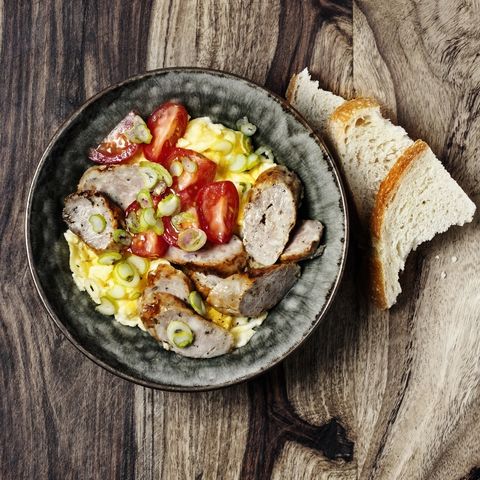
Claudia Totir
Look around at your fellow diner patrons’ plates the next time you go out for breakfast. Lots of brown and beige, right? By adding some color to your plate in the form of a vegetable, you’re also adding gut-filling fiber and disease-fighting antioxidants. This is easier than you might think. You could have half a broiled tomato on the side of your eggs. You could have some spinach sautéed into your eggs. You could even go wild and layer some avocado onto your next breakfast sandwich and then who knows what excitement the rest of the day has in store for you.
2. Have (just a little more) protein at breakfast
Research shows that 30 grams of protein during a meal helps you build and maintain muscle as well as keeps you feeling full afterward. Three eggs provide about 21 grams of protein. Push yourself closer to that 30 target with a bowl of Greek yogurt or cottage cheese. Or have some smoked salmon on your toast. Or have a side of good cheese. Or, heck, have another egg.
3. Convert to “self-limiting” snacks
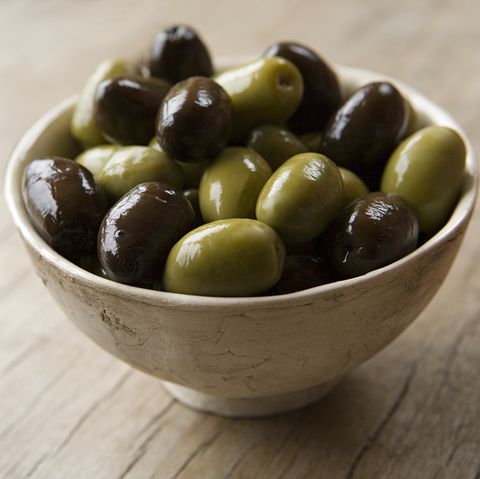
Image Source
There are certain foods that are inherently difficult to overeat. Good olives. Pickles. Hard-boiled eggs. Apples. It’s largely because monolithic snack food companies haven’t (yet) taken these foods, stripped them of their nutrients, crunch-ified them, and put them into giant bags for easy eating. So stuff your pantry, fridge, and office desk with these snacks and you’ll keep hunger at bay while also sneaking in some nutrients. And to the point about apples…
4. Eat more apples
One medium apples contains four grams of fiber, which is a nice amount of fiber to help you feel full. But apples also offer a good gut-check for if your body really needs a snack because its hungry, or if your mind needs a snack because its bored. The next time a snack craving strikes, ask yourself: “Am I hungry enough to eat an apple?” If the answer is no, then you’re not actually hungry enough for a snack. If the answer is yes, then eat an apple.
5. Start cooking with more herbs
Fresh herbs have nary a calorie and carry a powerful amount of flavor, as well as a nice bonus of antioxidants. Note the word “fresh.” While dried oregano is nice on a slice of pizza and dried dill can perk up a tuna fish salad, fresh herbs are the best way to go 99 percent of the time. (Fresh oregano is even better on pizza; fresh dill in tuna ditto.) Don’t know where to start? Snip chives atop your scrambled eggs. Sprinkle thyme leaves over spaghetti and meatballs. Clobber your tacos with fresh cilantro. You’ll get the hang of it.
6. Forget not the fire
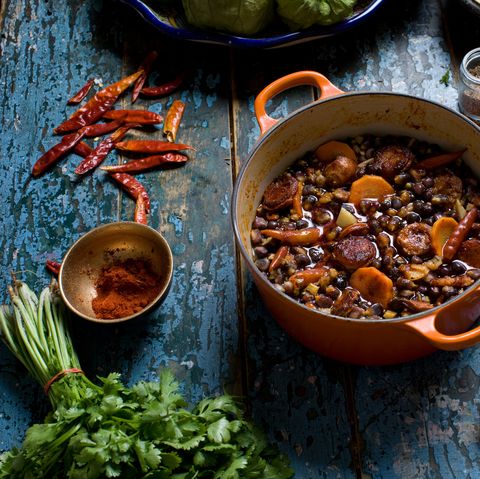
Michael Berman
To a similar extent, hot peppers or hot sauce also both contain payloads of flavor for hardly any calories. Thinly slice a jalapeno, serrano, or Thai chile and add to chili during cooking or atop after serving. Chopped some pickled jalapenos into your next chicken salad. Take the bottle of hot sauce you usually use for topping your tacos and shake some into your ground beef as it cooks for more evenly seasoned taco meat. Feel the burn.
7. Salt your produce
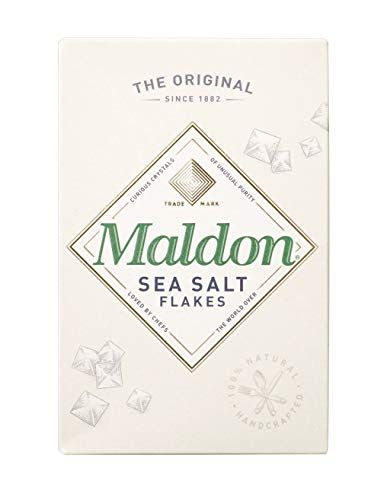
You know why some people don’t like vegetables? It’s because they’re still cooking their vegetables like their grandmother used to: reheated out of a can. Their grandmothers are wonderful and caring people, of course, but just never to vegetables. Instead, try charring your produce (green beans and Brussels sprouts are perfect) in a hot oiled cast-iron pan until crisp-tender and then scattering them with flaky sea salt like Maldon. Or just bite into a tomato or cucumber, sprinkle with salt, and repeat. Another shocker: This method works well with fruit too. YES SALTED FRUIT.
8. Eat fruit for dessert
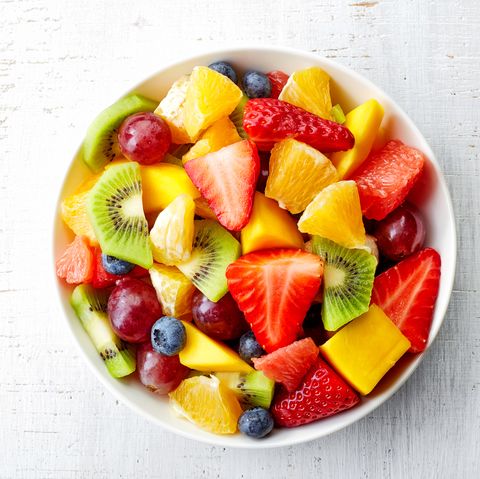
baibaz
Cold sliced oranges, cold pineapple chunks, cold cantaloupe wedges, cold halved watermelon and a spoon—whatever you serve just make sure it’s cold. It’s better than way. Like ice cream, almost. Just a sweet, but without the gut-busting feeling afterward. Don’t forget the salt.
9. Set a snack bedtime
Maybe it’s 8:00 p.m. Maybe it’s immediately after your last bite of dinner. Whatever boundary you set around when you stop eating at night, stick to it. This may help create a mental break from your cravings and maybe even guide you to a better rest. It’s hard to go to bed after inhaling half a bag of cheddar popcorn.
10. Really enjoy your food
Too many diets force you into vilify foods you enjoy. That unfairly demonizes certain food groups and makes you feel guilty for indulging in them. Eating shouldn’t make you feel guilty—or like you need to distract yourself from eating it. Eating should make you feel good. So the next time you sit down to a meal, put away your phone, turn off the TV, and focus. Look at the food you’re about to eat. Take a bite. Enjoy the flavors and texture of the food. Smell the food. Relish the food. Because eating well isn’t just what you put on your plate—it’s about how that food makes youfeel.
Source: Read Full Article